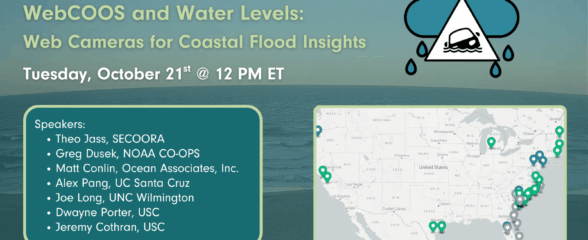
Update, July 1, 2020: Due to the uncertainty of traveling and hosting gatherings of over 100 people in October 2020, the workshop planning team has made the very difficult decision to cancel the Drones in the Coastal Zone workshop. Cancelling the workshop allows the planning team to start fresh and rethink a new format that permits for virtual and in-person participation. A few ideas discussed include a webinar series in fall 2020, online activities/ trainings, and the potential for an “air show” in 2021 (limited capacity workshops in different states). Click here for the workshop website.
Please save the date for a US Southeast and Caribbean regional workshop on applications of drones in coastal ecosystem management to be held March 31 – April 2, 2020 in Beaufort, North Carolina jointly hosted by NOAA at the Beaufort Laboratory and Duke University Marine Robotics and Remote Sensing Lab.
The workshop will cover aspects of drone technology including governmental policy and procedures, mission planning and data management, and demonstrations on emerging drone technologies, imaging and data analysis and visualization techniques. The workshop will also provide a venue to share experiences and network with experts and colleagues around the Southeast (North Carolina to Florida) and US Caribbean.
Related news

SECOORA Webinar | WebCOOS and Water Levels: Web Cameras for Coastal Flood Insights
On October 21st at 12 PM ET, SECOORA is hosting a webinar with investigators from the Webcam Coastal Observation System (WebCOOS) project team and the WebCOOS Project Manager. Web cameras are a low-cost technology that can be used to document flooding impacts to coastal communities. Register here.

SECOORA Funding Opportunity Announcement: Letters of Intent Solicitation
SECOORA will submit a coordinated regional proposal in response to the anticipated FY 2026 Implementation of the U.S. Integrated Ocean Observing System (IOOS) funding opportunity. Letters of Intent to be considered for inclusion in SECOORA’s full proposal are due September 9, 2025.

SECOORA Hosts the First Surface Elevation Table (SET) Community of Practice Virtual Workshop
The SECOORA SET Workshop was virtual on July 17, 2025. More than 50 Community of Practice members and stakeholders joined this collaborative workshop to discuss SET monitoring, coastal resilience, and data-driven decision making in the Southeast.